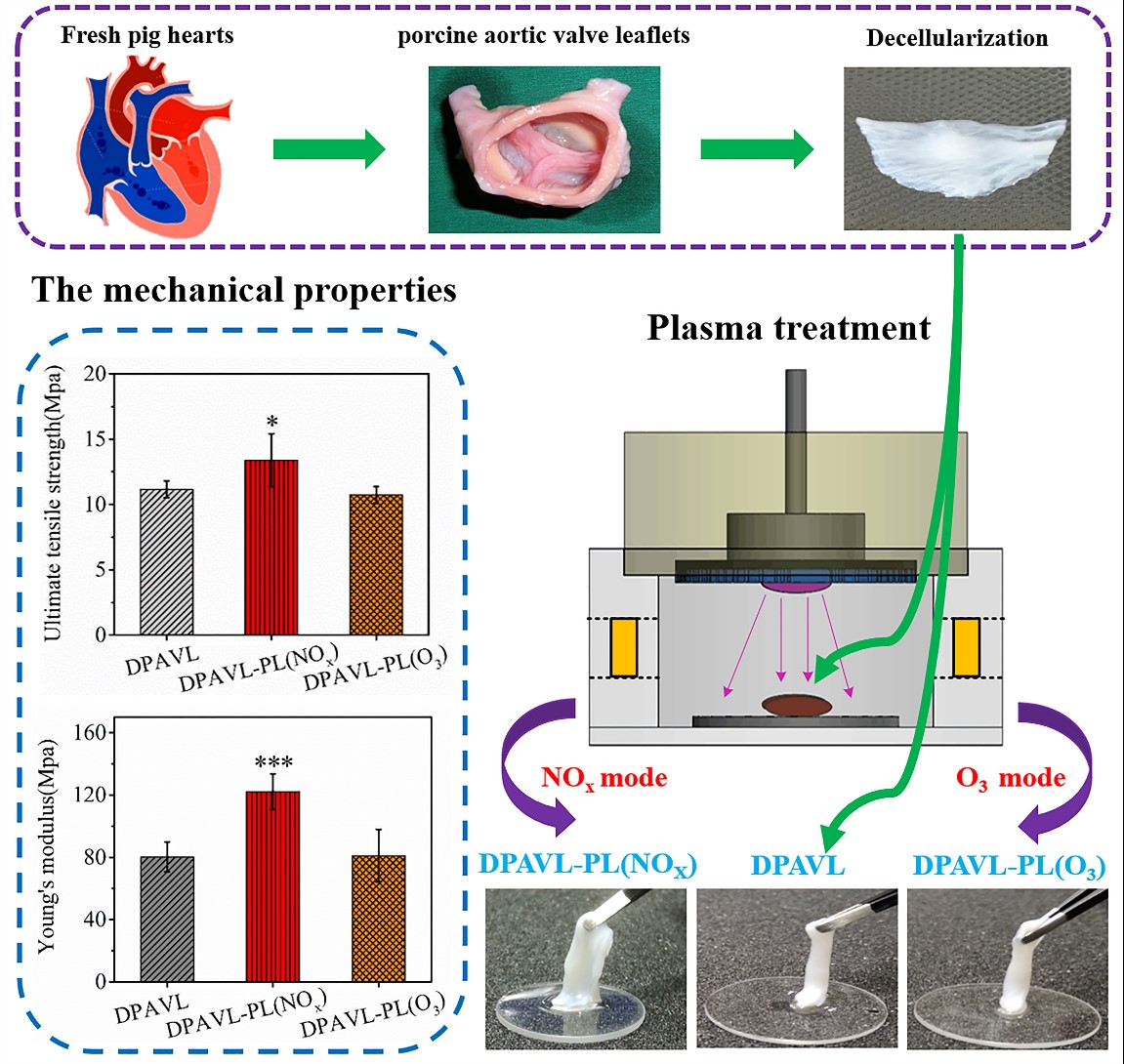Home > Direction > Plasma bioelectromagnetics Technology
(1) Biomedical applications
Atmospheric pressure low temperature plasma can not only effectively treat biological tissue, but also cause almost no damage to biological tissue, so it has been widely studied in biomedical field. The laboratory has long carried out a lot of research work in bacteria inactivation, stomatology, hemostatic coagulation, biomaterial treatment and so on. In particular, the surface discharge plasma source has been used to carry out a series of related research work on tinea unguium disease, and good experimental and clinical results have been obtained in our research. In addition, the surface discharge plasma source was used to modify the decellularized porcine aortic valve leaflets, which improved its mechanical properties by nearly 50%. (References: Investigation of air plasma generated by surface microdischarge for decellularized porcine aortic valve leaflets modification: Plasma Process and Polymers,Vol.17,Num.9,Sep.2020)

(2) Intelligent bone diagnosis technology based on impedance spectrum
Bones and joints are important organs and structures with protection, support, hematopoiesis, storage and movement functions. In addition to the fractures and other problems caused by occasional accidents, bone-related diseases are more mainly accompanied by the aging of the population. In recent years, more and more patients with bone and bone joint diseases have even become younger. For the evaluation of the physiological and pathological conditions of the bones and joints, the first problem to be solved is to accurately identify the different parts of the bones and joints, and then is to take further analysis. However, traditional diagnostic techniques for different parts of the bones and joints, including X-ray examination, CT (Computed Tomography), and MRI scanning, can identify different parts of the bones and joints to some extent, but at the same time have shortcomings such as expensive testing cost, harm to the testing objects, and easy misdiagnosis.
For the problems of existing technology, our laboratory proposes an intelligent bone diagnostic system based on impedance spectroscopy. The system only needs to obtain the impedance spectrum data of different parts of bone and joint, which can realize the automatic identification of different parts of bone and joint, greatly reducing the dependence on artificial diagnosis, with strong generalization ability, high recognition accuracy and low misdiagnosis rate. Currently, the diagnostic technique has been successfully applied to different parts of the pig femur recognition, with a recognition rate of up to 90% .